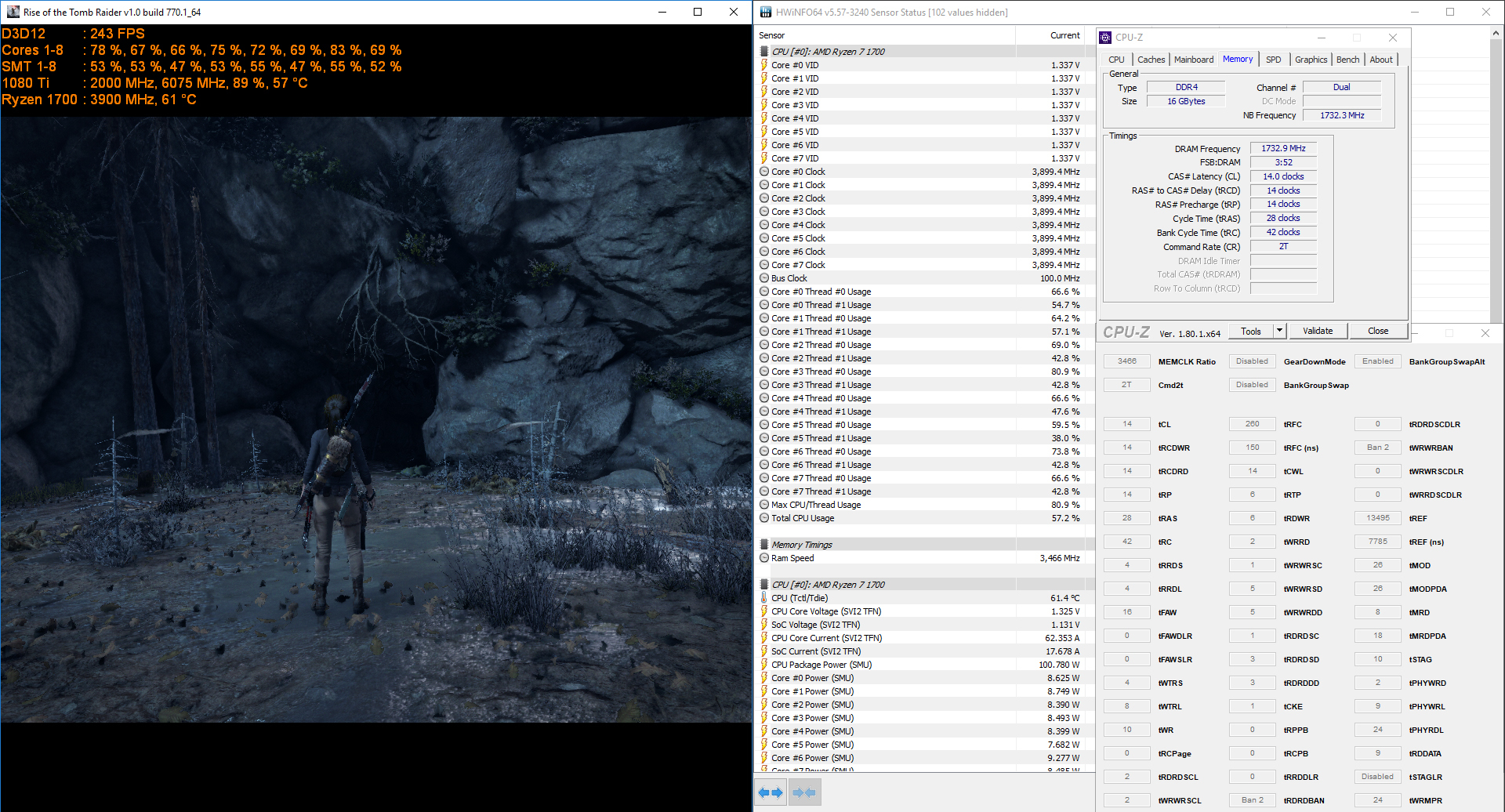AMD will really have to work on the plug and play aspect. Ryzen is rough around the edges, but with enough effort you can make it shine (mainly tuning your memory correctly). Just in a purely CPU limited scenario the difference you can see is absolutely absurd:


Of course this is exaggerated by the fact that I'm using an overclocked 1080 Ti to run what looks to be sub 720p res (creating a purely CPU limiting scenario), but it just shows how limited Ryzen is with a non-optimal memory setup (2666 MT/s with Auto timings). If AMD manage to make Ryzen perform more consistently across many different setups that'll be the real winner imo.


Of course this is exaggerated by the fact that I'm using an overclocked 1080 Ti to run what looks to be sub 720p res (creating a purely CPU limiting scenario), but it just shows how limited Ryzen is with a non-optimal memory setup (2666 MT/s with Auto timings). If AMD manage to make Ryzen perform more consistently across many different setups that'll be the real winner imo.


